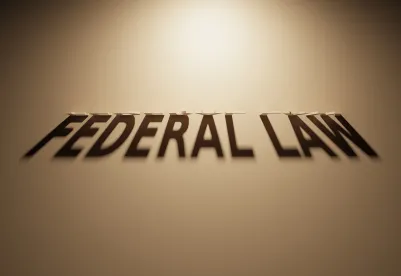Federal Contractor COVID-19 Vaccine Mandate Update. The federal contractor vaccine requirement is back in the news. As T. Scott Kelly and Emily Halliday discussed, in late August 2022, the U.S. Court of Appeals for the Eleventh Circuit narrowed the coverage of a previously issued nationwide injunction that barred enforcement of the federal contractor COVID-19 vaccine mandate. The Eleventh Circuit’s ruling officially went into effect on October 18, 2022. As a result, on October 19, 2022, the Safer Federal Workforce Task Force issued an update regarding the enforcement of the federal contractor COVID-19 vaccine mandate:
Despite the lifting of the nationwide bar to enforcement on October 18, 2022, at this time agencies should not: (1) take any steps to require covered contractors and subcontractors to come into compliance with previously issued Task Force guidance; or (2) enforce any contract clauses implementing Executive Order 14042.
Going forward, federal contractors can expect at least two more significant steps from the Task Force and the administration. First, “the Task Force will begin a process to update its guidance regarding COVID-19 safety protocols for covered contractor and subcontractor workplace locations.” The Office of Management and Budget (OMB) will then “review the updated Task Force guidance and make a determination regarding whether the new guidance promotes economy and efficiency in Federal contracting.” Second, if OMB approves the updated guidance, “OMB will provide guidance to agencies on timing and considerations for the provision of written notice from agencies to contractors regarding enforcement of contract clauses implementing requirements of Executive Order 14042, except as barred by any applicable injunctions.”
NLRB Extends Joint Employer Comment Period. The National Labor Relations Board (NLRB) has extended the deadline for stakeholders to submit comments in response to its proposed joint-employer regulation. Comments were originally due on November 7, 2022, but they now must be received by the Board on or before December 7, 2022. Reply comments are now due by December 21, 2022.
NLRB Inspector General to Audit Mail-Ballot Protocols. Mail-ballot voting continues to be an issue at the NLRB. Several weeks ago, the Buzz noted a recent Board decision in which the dissent advocated for a comprehensive review of the Board’s post-pandemic mail-ballot standard. This week, we highlight a memorandum from the NLRB’s Office of Inspector General that initiates an audit of the Board’s mail-ballot election procedures. According to the memo, the audit will “[d]etermine if any external factors are impeding the Agency’s mail ballot elections” and “[d]etermine if the Agency’s internal controls for mail ballot elections and representation decision writing are effective.” The audit is perhaps a response to employer complaints made over the summer that NLRB officials were improperly coordinating with union officials during a mail-ballot election. According to the memo, a draft report will be issued in March 2023.
Immigration News. The immigration policy front has been busy of late. For example:
- Form I-9 “alternatives” docket closes. October 17, 2022, was the deadline for stakeholders to submit comments in response to a U.S. Immigration and Customs Enforcement proposed rule that potentially would allow for “virtual” Form I-9 verification procedures. If finalized as proposed, the regulation would authorize the secretary of homeland security to explore flexible options for I-9 verification.
- More H-2B visas on the way. The U.S. Department of Homeland Security recently announced that it would publish a regulation providing for the issuance of an additional 64,716 H-2B temporary nonagricultural worker visas for the 2023 fiscal year. Of that number of supplemental visas, 20,000 will be reserved for workers from Haiti and the Central American countries of El Salvador, Guatemala, and Honduras, with the remainder available for returning workers. The announcement does not mention how the full-year supplemental visa allocation will be apportioned between the first and second halves of the fiscal year.
PBGC Issues Reg. Proposal on Withdrawal Liability. The Pension Benefit Guaranty Corporation (PBGC) has proposed a rule to “provide interest rate assumptions in determining a withdrawing employer’s liability to a multiemployer pension plan.” A multiemployer pension plan is a collectively bargained defined benefit plan involving two or more separate employers. Pursuant to the Employee Retirement Income Security Act of 1974 (ERISA), when an employer withdraws from an underfunded multiemployer plan, it is subject to withdrawal liability based on the employer’s share of the plan’s unfunded vested benefits. According to a PBGC press release, “[t]he proposed rule would specifically permit the use of [ERISA section] 4044 rates either as a standalone assumption or combined with funding interest rate assumptions, to determine withdrawal liability.” Comments are due by November 14, 2022.
Faisons Affaire. Today, $15 million might buy you Vin Scully’s former home. Back in 1803, that same amount (roughly $340 million in current dollars) was enough to purchase the Louisiana Territory from France. At the time, President Thomas Jefferson recognized that the port of New Orleans—owned by France—would be vital to the newly formed United States, if the nation was to be a player in the international trade game. Conveniently, France’s leader, Napoleon Bonaparte, was in dire need of a cash infusion, having suffered a military defeat in modern-day Haiti and having begun preparations for war with Great Britain. Sensing an opportunity, Jefferson instructed U.S. Minister to France Robert Livingston to offer the Little Corporal as much as $10 million for New Orleans and the Florida panhandle. Napoleon countered by offering to sell not just New Orleans, but the entire Louisiana Territory for $15 million. A deal was quickly agreed to and was finalized on October 20, 1803, when the U.S. Senate ratified the Louisiana Purchase Treaty by a vote of 24–7. (The seven naysayers were Federalists who argued that Jefferson had lacked the authority to make the purchase.) The territory included land that would become Louisiana, Arkansas, Missouri, Iowa, Oklahoma, Kansas, Nebraska, North Dakota, South Dakota, as well as parts of Minnesota, New Mexico, Montana, Wyoming, and Colorado.




 />i
/>i

